
January-February 2018
A Little Palm
By Paul Harvey
This is the story of a man and his elusive little engine. After extensive research, I still had to speculate how the story of the making of this engine might have happened. There are other alternatives as to its origin, but there is no apparent way to choose which is correct. I hope you will enjoy imagining all the alternatives and come to your own conclusion.
Victor Hugo Palm was born in Karns City, Pennsylvania, on August 25, 1879. His father was George Palm who would soon be known for his work with convertible gas and/or steam engines. George's invention was patented in 1900, and he formed the Palm Gas Engine Company to build his machines. One surviving example is displayed at Coolspring Power Museum and shown in Photo 1. Although no other Palm engines are known to my knowledge, it appears to have been a successful design
Victor is noted to have worked for his father as a machinist in 1903. Then suddenly on December 5, 1906, George Palm passed away. There were two other partners in the Palm firm and they kept the company active. Victor is last mentioned as foreman at Palm in 1910. During this time, he gained knowledge of the operation of a convertible gas and/or steam engine.
For the rest of his life, he seemed to skip from one job to another. Records found in Ancestry.com reveal that he was a foreman for the T.W. Phillips Manufacturing Company in 1912. In 1915, Victor is listed as a machinist for Spang and Company. He is then noted to be foreman of machinery at Butler Engine and Foundry in 1917. He continued with that job until his death on October 11, 1932. Tragically he fell dead running his lathe at work that morning. He was 53 years old. He is buried at North Side Cemetery, in Butler, Pennsylvania.
Victor had one child, a son, Leroy Edwin Palm, who did not follow the engine trade. Leroy became a store manager for the S.S. Kresge Company at their location in Olean, New York.
During his years as a machinest, Victor designed his own convertible engine and was granted patent number 1,169,672 on January 25, 1916. He called his invention a "combined gas and air engine." Note that he had dropped the steam usage of his father's engine, and concerned his with compressed air. The patent drawings can be seen in Photo 2 and Photo 3. It was designed to operate as a reversible, single-acting gas engine or a reversible air engine. The gas engine valves are on one side and the air mechanism is on the other. It could even run as a gas engine on one side of the piston, and be an air compressor on the other side! It was very complicated, but operational.
It is not apparent to me why Victor designed this engine. His father's engine was less complicated and only marginally successful. Fifteen or so years later, Victor designed a more complicated engine which was obsolete at the time it was patented. The oil producer did not want a complicated machine and was happy with the two-cycle design. The number of Bessemer engines sold proved that point. So, did he design it because he had an idea he wanted to prove, or did he actually intend to manufacture and sell the machine? I would speculate that he actually felt he could market it and eliminate his daily job at Butler Engine and Foundry. What do you think?
Twenty-five or so years ago, several friends and I visited a collection in Emlenton, Pennsylvania. There we saw a small engine that appeared to have dual operation, and we commented that it resembled our Palm. The owner called the engine a Riddle and said it was built by the Riddle Machine Shop in Clintonville, Pennsylvania. That was where he had found it. Photo 4 is the Riddle Machine Shop as it appears today. A few years later that collection was sold by auction and I had no idea what happened to the little engine. Years went by until CPM's engine show in 2016 when it turned up here on display! Wow! I was able to purchase it and since have spent much enjoyable time on the engine and its history.
Photo 5 shows the air chest side of the engine. The control rod can be seen. This rod is moved by the operator to change its mode of operation. It has a very odd reversing device that was patented by George Palm. And now his son is using it. The castings are excellent and it shows good workmanship. The gas side of the engine is depicted in Photo 6. Note the automatic intake valve facing forward from the valve chest, and the two push rods for the exhaust valve. Whichever one is engaged determines the direction the engine will run.
So who made this little engine, and why? I made a trip to Clintonville and spoke with several persons who knew Mr. Riddle. He mainly repaired oil field equipment and fabricated a pump jack of his own design. No one recalled an engine ever being built. Although I feel that Riddle did not make it, it still is a mystery how it got to his shop. Perhaps he bought it as a curiosity?
Another possibility is that Victor built it in his spare time. Perhaps Victor had a shop in his home garage or made it in free time at work? Did he just make it to see if his patent was operable, or did he intend to use it as a "salesman's sample" to get orders for full size engines? I do not know.
Lastly, did some model maker or hobbyist find the patent and build it for his pleasure? There are no identifying marks of any kind on the engine to give a hint as to the maker. There is no proof that Victor actually built it - anyone with machining skills could have done it. However, I assume that Victor built it and passed away before he could further develop the machine. What do you think?
Photo 7 shows the air chest with the cover removed. It is a usual steam engine "D" valve and similar in operation. Reverse is obtained by changing the timing of the movement of this valve. The cylinder is seen in Photo 8. It is an amazing casting! The finish is excellent and the passages are so tiny and precise. It must have been a nightmare for the foundry to produce the cores and pour the casting.
When I started working on the engine, I realized that the silver-blue color was a spray on automotive paint applied over dirty and rusty parts. Before this paint job, it appears to have been stored in a damp location given the rust damage on many of the parts. In cleaning, I found some traces of a dark red or maroon color and tried to duplicate it as well as I could. I feel that in original condition it had bright work and maroon paint. I usually like to leave an engine in its "as found" condition, but I think painting and polishing were the best choices for this little engine.
The finished engine is shown in Photo 9. Since that photo was taken, it has the wiring and piping completed and has been mounted on cast iron legs. It is certainly a masterpiece of finely finished parts. If indeed, it is "one-of-a-kind," it received much detailed work with the making of the castings and the work involved in machining. Do any others exist?
I hope you enjoy coming to your own conclusions about the mysteries of the engine. I would certainly appreciate knowing your opinions and receiving any further information. I can be reached at engdoc@comcast.net. The mystery is not yet solved!
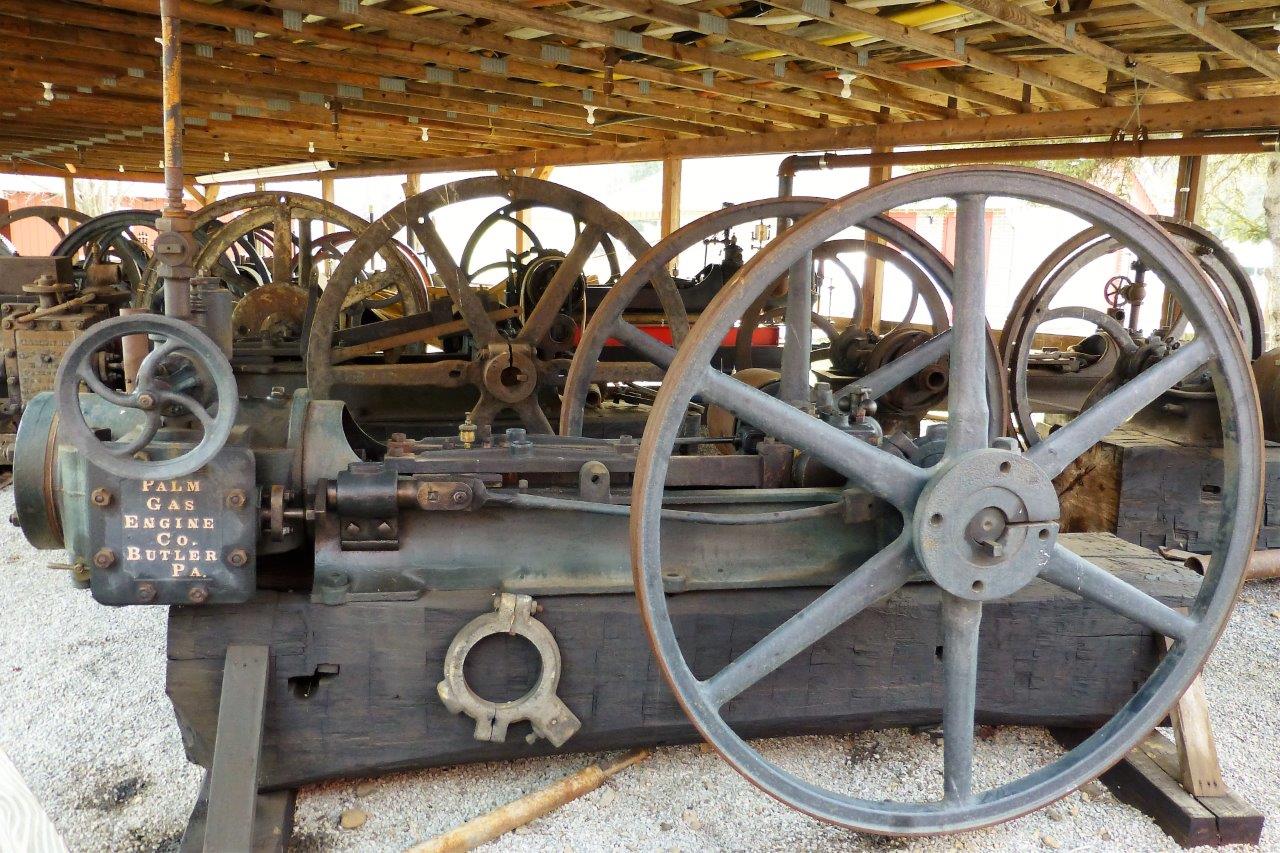
Photo 1: Palm convertible steam/gas engine
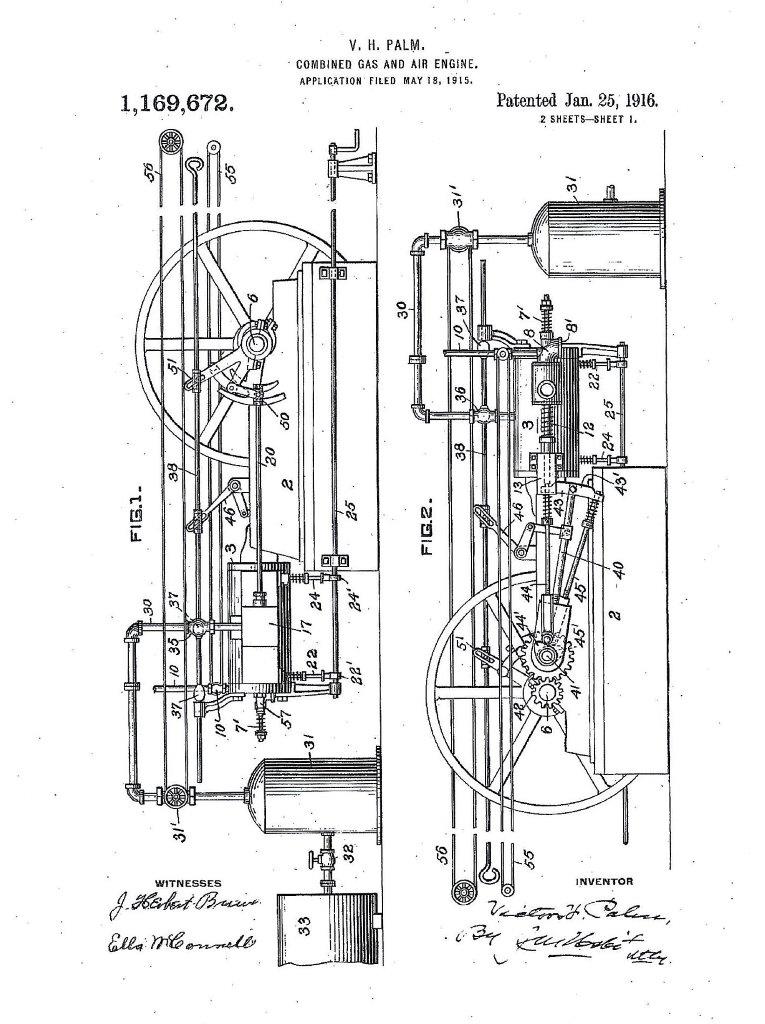
Photo 2: Palm engine patent
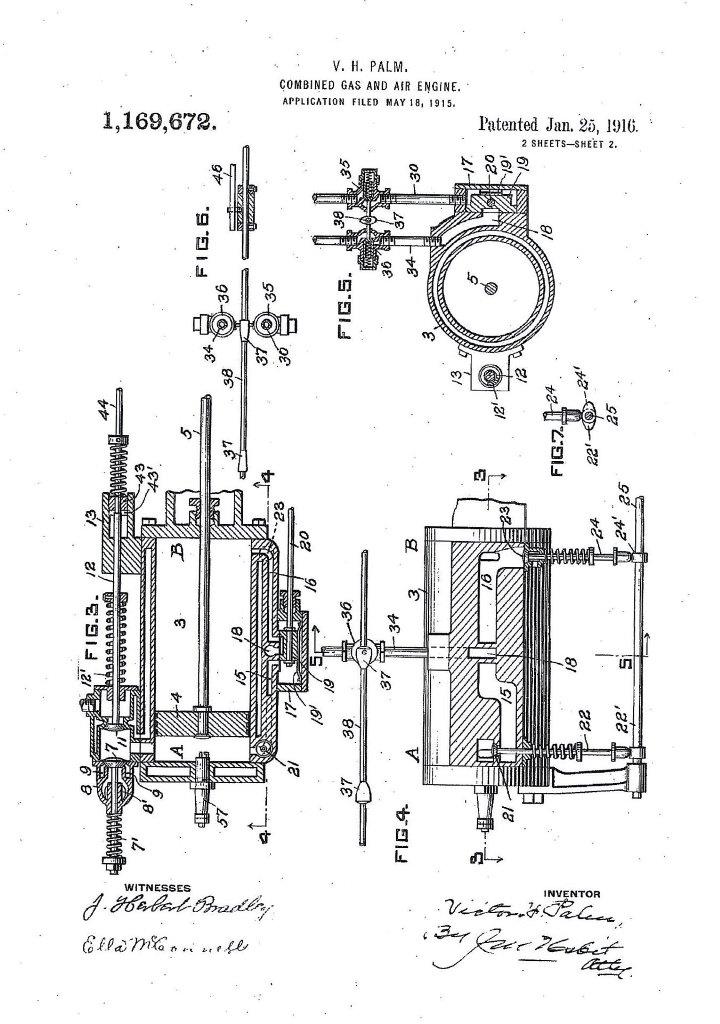
Photo 3: Palm engine patent
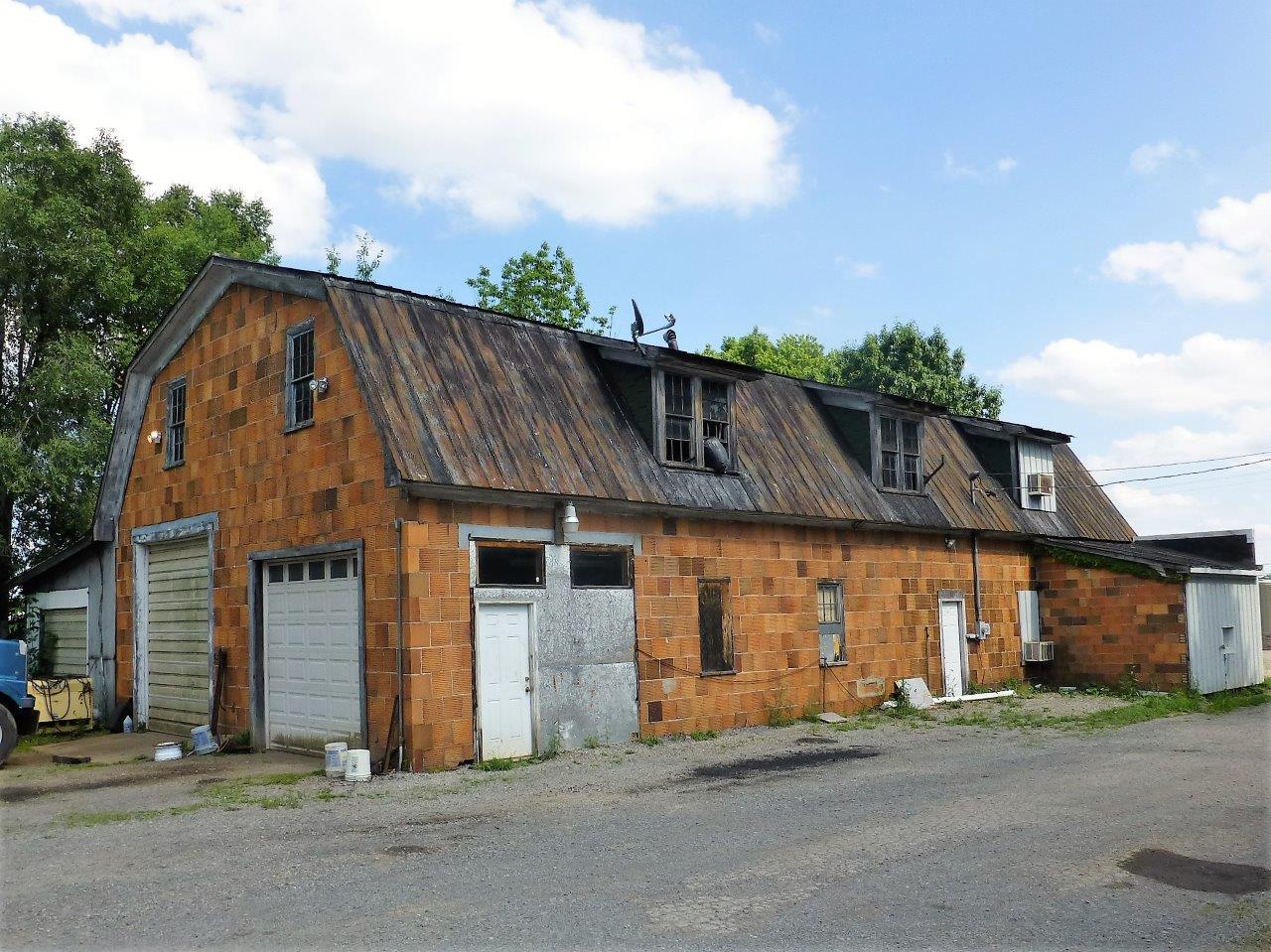
Photo 4: Riddle Machine Shop

Photo 5: Air side of the Palm engine

Photo 6: Gas side of the Palm engine

Photo 7: Air chest
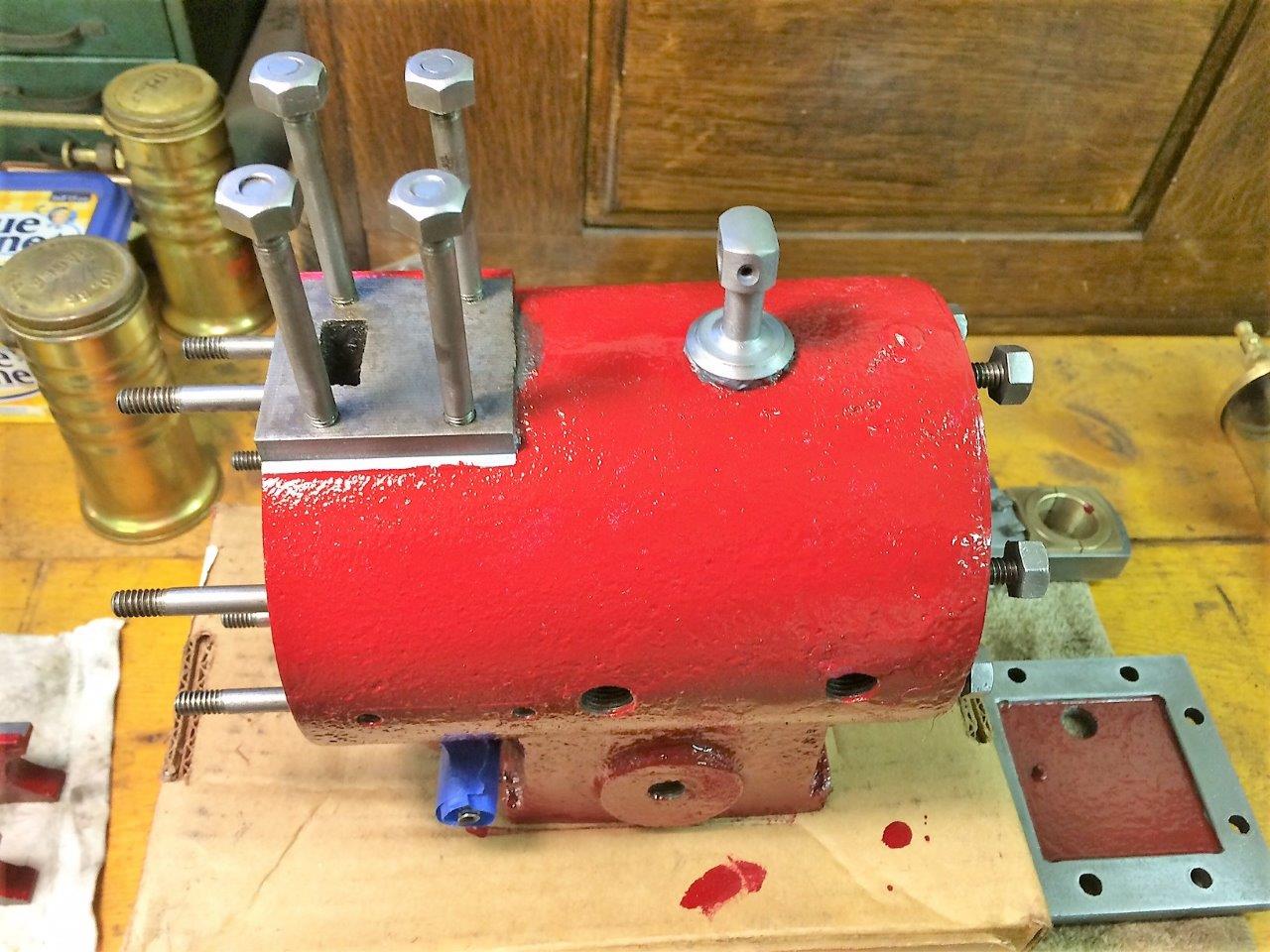
Photo 8: Cylinder after painting

Photo 9: Finished Palm engine